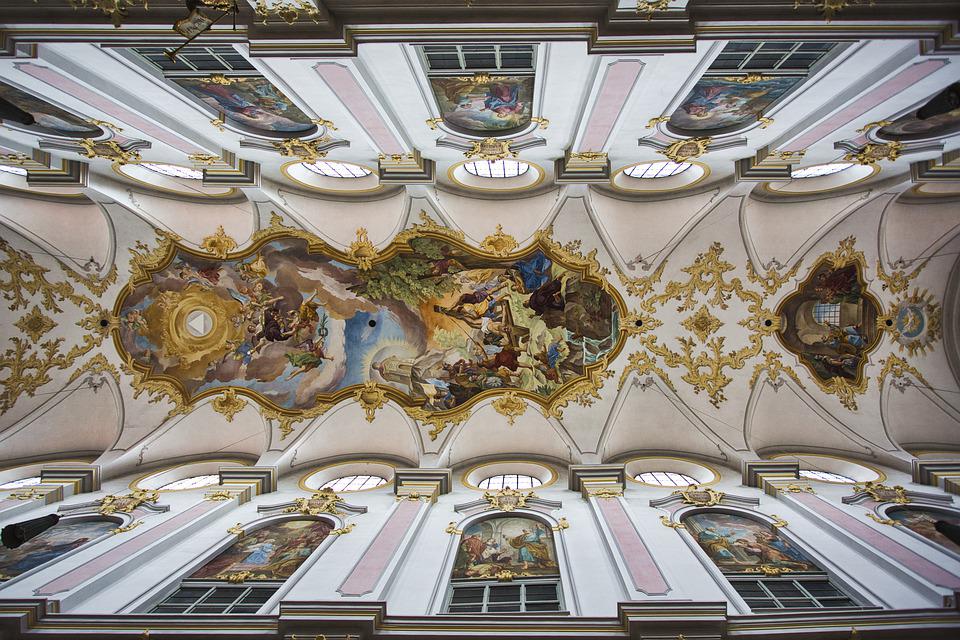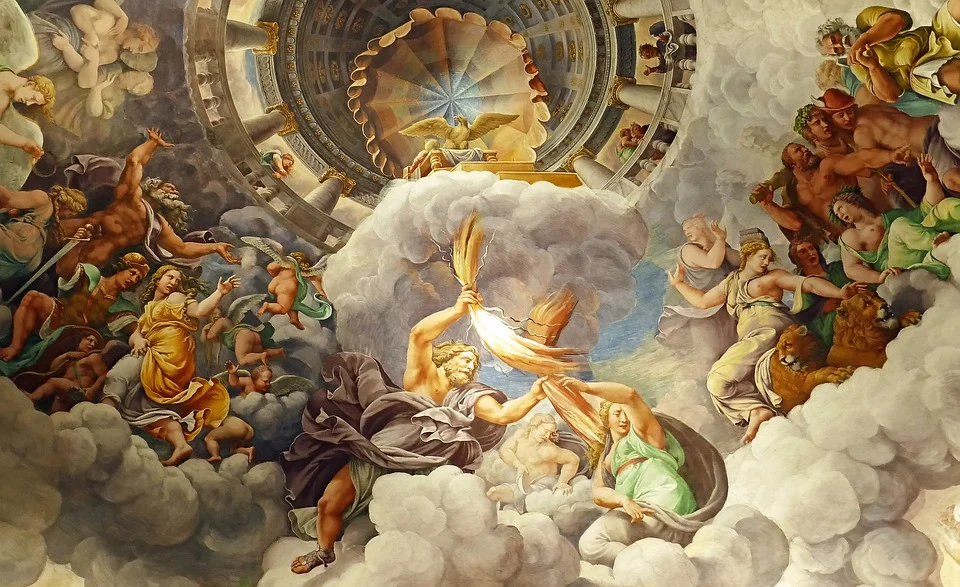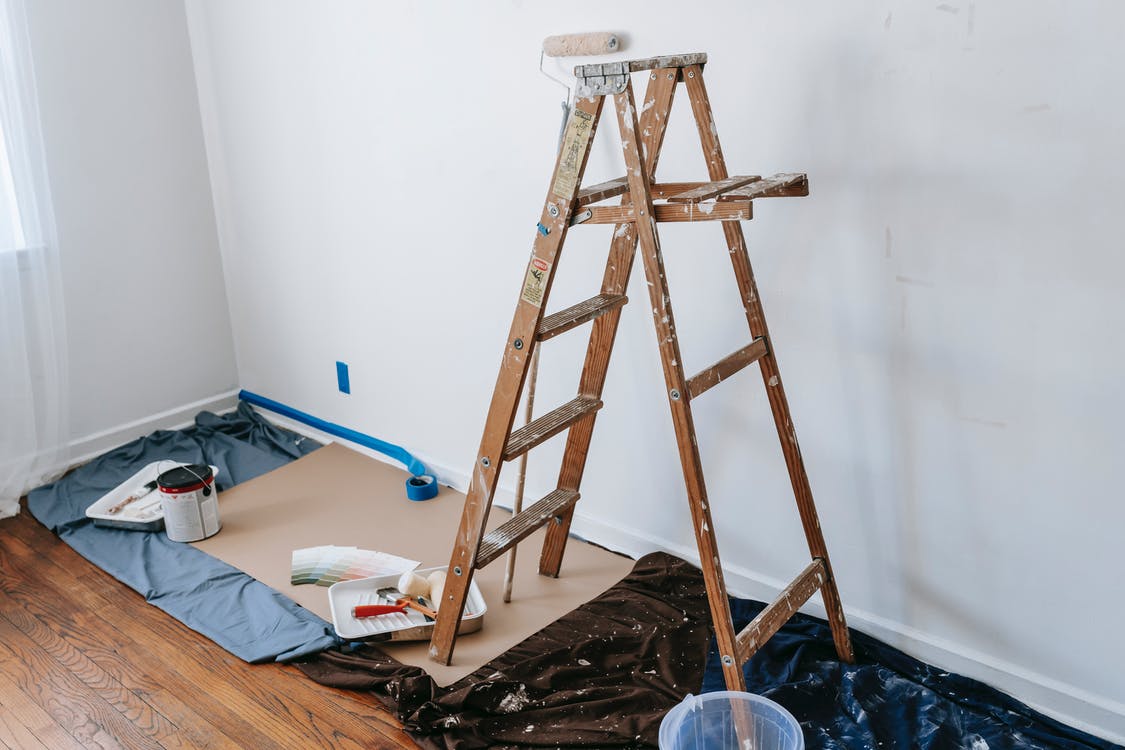Few things add more character and drama to a room than a ceiling mural. It’s not as difficult as you might think— the process is very similar to any wall painting you might do at home— and the results are bound to impress. You must know these things when considering designing your ceiling with a painted mural.
Looking to add dramatic flair to any room? Explore the bold, modern wall mural designs that the printers at Platon Graphics of L.A have on offer for sales.
What Are Ceiling Murals?
Ceiling murals are works of art that are painted straight onto the ceiling. Michelangelo’s ceiling mural in the Sistine Chapel in the Vatican and the stars on the primary concourse ceiling at New York’s Grand Central Station are two famous examples of these murals. Though ceiling murals are painted, they can be created in various ways, including trompe l’oeil, stencils, fresco, and decals.
Murals created with the trompe l’oeil technique are visually appealing because they appear three-dimensional. The artist employs this method of precise imagery to generate an optical illusion, making the subjects appear alive, and the ceiling appears to be larger. The Jesuit Church in Vienna, Austria, has ceiling murals that appear to be golden domes but are barely vaulted.
Murals painted in the fresco technique are made of plaster and paint. The fresco method was common during the Renaissance period, and you can find fresco ceilings in many churches throughout Europe. The artist paints in small sections on a thin layer of plaster with pigment; as the plaster dries, the pigment adheres to the plaster and creates a permanent image.
Contemporary artists frequently use modern techniques to make ceiling murals. Using decals and stencils is much less time-consuming and cost-effective. Individual homeowners who want ceiling murals in their homes will find it more appealing.
Ceiling murals are most commonly used in children’s rooms, nurseries, and master bedrooms because the artwork is visible while the person is sleeping. Clouds, constellations or stars, and angels are popular mural themes.
Ceiling muralists who use stencils begin with a specific design and either hand-cut or order a custom stencil. The stencil is then taped to the ceiling with removable tape, and the artist paints the outline around it. The remaining image is filled in by hand with paint, and stencils work best for simple repeating designs like vines, clouds, or flowers.
Decals are becoming more popular as laser art techniques advance. The ceiling mural decal technique is similar to decoupage techniques in that a thin glue substance is painted over the decal to stick it to a piece of furniture. The laser images have a high-level definition, making them an excellent choice for homeowners looking for a professional piece of art without hiring a muralist.
A DIY Ceiling Mural Painting Guide
It is not as expensive as you think to have a custom mural painted. Here’s a step-by-step guide to having a mural painted on your ceiling.
What You’ll Require
Before you begin your ceiling painting project, gather the following materials:
- All of the paint colors you’ll need for the mural, plus a base coat of paint
- Ladder
- Drop sheets or cloths
- Rollers, brushes, and a lined paint tray
- Pencils
- Painter’s tape or masking tape
- Stencils to help you create your design
- Depending on the condition of the ceiling, you may also require repair supplies such as spackle and scraper.
Your mural plans will determine the types and colors of paint required. Matte, interior eggshell, or semi-gloss paints can all serve well, but you can even experiment with fun things like glow-in-the-dark paint for kids’ bedrooms.
Make sure to have a variety of roller and brush sizes on hand. You will require larger rollers and brushes to apply your base, but you will require small brushes to create detail—the more complex your layout, the smaller the brushes are required to complete it.
Making a Mural for the Ceiling
Are you ready to begin? Here’s how to transform your boring coved ceiling (or any ceiling type, really) into a work of art:
Prepare the Room
Move your furniture out of the space, or center the large pieces. If you choose to keep things in the room, make sure they don’t get in the way of the ladder as you paint your mural. You should use drop sheets or cloths to cover the floor and any remaining items in the room.
Preparing the Ceiling
Remove the light fixtures. Your ceiling is likely to be dusty, so thoroughly clean it. If there are any cracks, fill them in and smooth them out with sandpaper and filler. Discard any loose plaster that will make your finished work flaky or bumpy.
Make Your Design
Make a rough sketch of your design concept on paper. Before you begin painting, make sure you exactly know what you want. If you are artistic, you may be able to free sketch the design on a bigger scale on your ceiling, or you can purchase stencils to help you put the final design into action.
Apply Your Base Coat
To the ceiling, apply your base coat. Allow this to dry completely before proceeding to the next steps.
Prepare to Begin Painting Your Mural Design
With your design complete, it’s time to prepare the ceiling for the actual mural creation. Begin by taping off the ceiling’s edges to protect the molding and define your workspace. Sketch the design on your ceiling with a pencil, using stencils, or by free hand.
If your design is complicated, creating a grid system on your ceiling with painter’s tape may help you complete the task. Make sure your grid lines aren’t covering paintable areas or breaking up brush strokes in your design. Also, ensure that the light fixtures do not obstruct important design elements.
Create the Mural
Finally, finish your sketch and paint the mural! Begin with the biggest parts of the design and finish with small brushes to fill in the details.
Finishing Up
Your job is finished once your mural is completed. Reattach the light fixtures after the paint has dried and your ceiling is finished.
Any home would benefit from a ceiling mural. It will add a lot of visual interest to children’s rooms, especially if it includes glow-in-the-dark paint to bring a soothing nighttime environment for kids. Ceiling murals add sophistication and elegance to showrooms, art galleries, and other commercial spaces.




